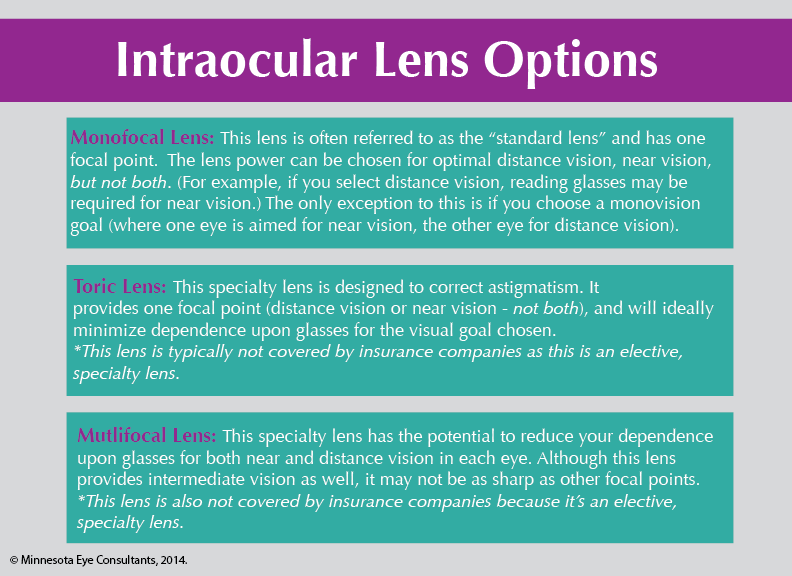A cataract is the clouding of the eye’s natural lens and can affect the vision as it progresses. Some common symptoms include clouding or blurry vision and glare around lights (especially at night). Patients may also notice that colors seem dull or muted and not as vibrant as they once were.

Cataract Surgery
According to the American Society of Cataract and Refractive Surgery (ASCRS), 3 million Americans undergo cataract surgery each year, with an overall success rate of 98 percent or higher. We’ve had some incredible medical advancements within the last several decades that have greatly contributed to the success rates and swifter recovery process for patients.
During the procedure, the surgeon will remove the cloudy, natural lens and replace it with an artificial lens implant (or an intraocular lens). There are various lens options available, some offering the opportunity to have less dependence upon glasses following the procedure. A discussion with your surgeon will determine the right lens option for you.
Below are a few of our most commonly used intraocular lenses.

The surgery itself takes about 10-20 minutes and after a short time in recovery, patients are able to head home. To prevent infection and reduce inflammation, most surgeons recommend a drop regimen immediately following the procedure.
What can be expected after Cataract Surgery?
It’s common to experience blurry vision, light sensitivity and tearing within the first few days. There are a couple post-op visits required and typically 2 to 3 weeks following is when the vision is healed enough to prescribe a new glasses prescription.
For 2 weeks following surgery, patients should avoid:
• Contaminated water (swimming pools, lakes, hot tubs and saunas)
• Bending with their head below their waist
• Lifting objects 20 pounds or greater
• Eye makeup
For more information on cataracts and cataract surgery, visit our Cataract Center.









